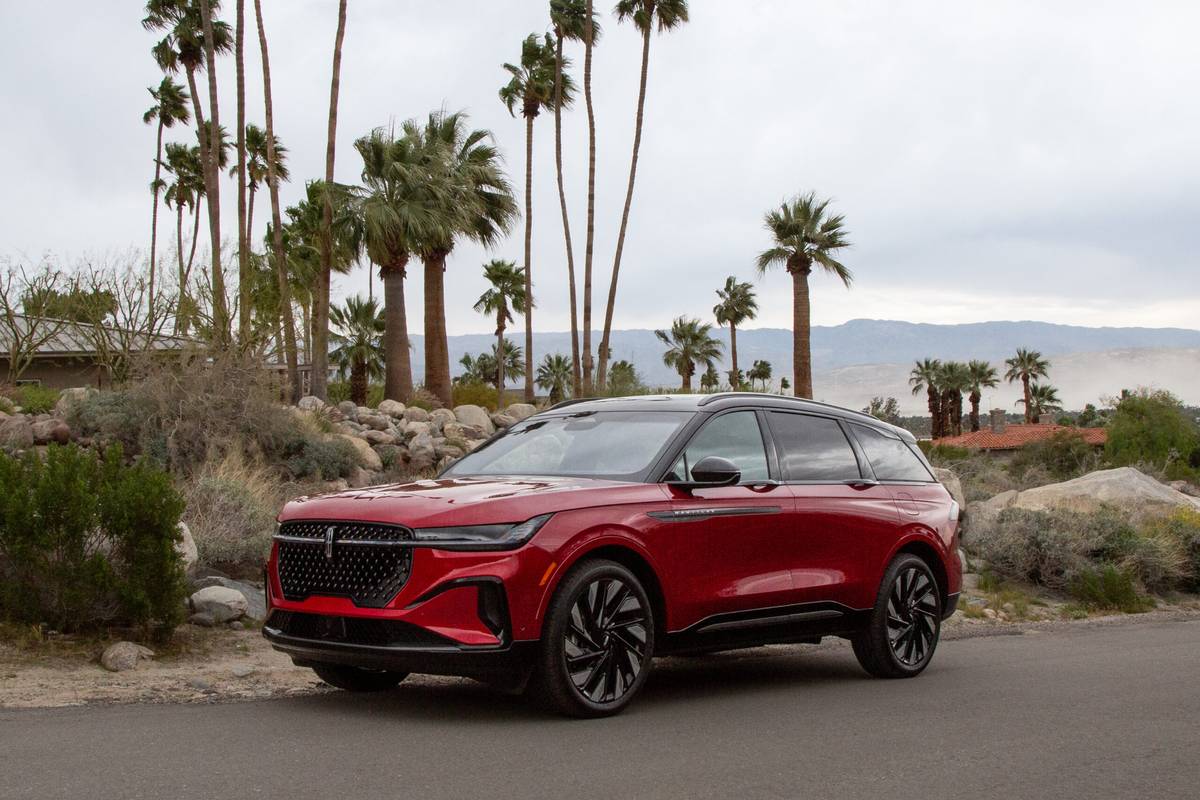washingtonpost.com's view
IT BEGAN peacefully, but turned into a battle — a heavyweight bout, at that. The competitors were a 1988 Chevrolet Caprice Classic Estate Wagon and a 1988 Ford Aerostar XLT minivan. The vehicles were used this summer to help transport the 60 young Swedish musicians of the Eskilstuna Gardet, their baggage and their 30 American hosts as part of the Arlington Youth Wind Ensemble student exchange program.
The two vehicles came under intense scrutiny shortly after greetings were exchanged.
“Biiiig American car,” said a Swedish trumpet player, surveying the Caprice Classic wagon, which seats eight with the extra rear seat up. “Verrry biiig American car” — but he asked for a ride in the seven-seat Aerostar van because, he said, it “looks like much more fun.”
“Oh, I prefer this one,” said a trombone player in the Swedish group, sitting in the Caprice wagon. “I don’t have to step up to get in,” she said. “Very comfortable.”
It went on like that for two weeks, constant argument back and forth. My goodness! Even the tiniest things provoked debate.
“What’s wrong with this design?” asked an American musician, looking at the tailgate of the Classic wagon.
“Wrong?” asked a Swedish kid, hunching his shoulders. “I see nothing wrong.”
The American youngster walked over to the wagon and pointed to the chrome outlining the tailgate window.
“Here,” he said triumphantly. “The bottom ends of the window are oval. The chromework is angular. It makes no sense.”
“Yesss, yesss. I see,” said the Swedish kid. “Mmmmm,” he said, getting a closer look. “Why do the chromework at all?”
And you thought auto writers were picky. Hah!
Caprice Classic wagon complaints: A clickety-clackety noise emanating from the front right wheel, audible with windows down, drove some passengers crazy. “This kind of noise should not be in a new car,” said a Swedish musician. He’s right.
Also, passengers in the foldable, extra rear seat, facing the tailgate window, complained that the Caprice Classic’s air conditioner worked too slowly.
Aerostar complaints: An interior fit-and-finish problem, poorly aligned plastic seams on the lower right passenger side, drew some criticism.
Other complaints concerned the necessity of removing the Aerostar’s seats to gain extra cargo room. (By comparison, the Classic wagon’s rear seats folded easily to create humongous carrying space for bass drums and other gargantuan instruments.)
Caprice Classic praise: Passengers marveled over the ride of this 116-inch-wheelbase, rear-wheel-drive wagon. “Very pleasant. I like it very much. I like this big American car,” said a male chaperone for the Swedish group.
Aerostar praise: “Fun car” apparently has international meaning. Both sexes of both groups rated the Ford minivan “best” for all-round, on-the-road pleasure. “We have wagons in Sweden, but nothing like this. This is exciting,” said one of the visiting musicians.
Head-turning-quotient: A dead draw, believe it or not! The long, low Caprice Classic wagon, with its wide expanses of exterior woodgrain, often was referred to as “pretty” by members of both groups. The aerodynamic Aerostar, with its plush interior and privacy windows, frequently was referred to as “the limo” among its devotees, who regarded the Caprice Wagon as a designer’s nightmare.
Ride, acceleration, and handling: Both vehicles received high marks for ride, although the Aerostar, which is technically a truck, got some demerits for bounciness.
The Caprice Classic, with its optional 5-liter, V-8, 170-hp engine, was the clear winner in acceleration. Vaarrrooom! The Aerostar was equipped with a standard, 3-liter, 145-hp V-6 that was prone to excessive downshifting (both vehicles had four-speed automatic transmissions).
Braking in both vehicles was excellent. Handling in both was marked by body sway in turns, but was generall very good.
Sound systems: The musicians chose Ford’s factory system — four-speaker AM/FM stereo radio and cassette with seven-band graphic equalizer. The four-speaker GM system, with five-band equalizer, was plagued by a faulty fader, making it impossible to balance the front and rear speakers.
Mileage: 21 to the gallon for the Caprice Classic (25-gallon fuel tank, estimated 515-mile range on usable volume); 20 to the gallon for the Aerostar (17-gallon tank, estimated 330-mile range on usable volume). Both vehicles were driven heavily loaded, mostly highway, and with air conditioners at “maximum” setting most of the time.
Price: $16,534 for the Caprice Classic wagon, including $1,714 in options and a $480 destination charge; $15,083 for the Aerostar, including $3,437 in options and a $450 destination charge. The base price for the Caprice, for example, includes automatic transmission and velour seats which must be bought as options on the Aerostar.
Verdict: The young musicians gave the nod to the Aerostar, mostly because of its styling and privacy windows. I favor the Caprice Classic, because of its overall practicality and reliability. But, alas, the majority of the adult chaperones cast ballots in favor of the Aerostar, because it could be transformed into an “ambulance” (with its two terrific, reclining center seats) to transport ill teenagers comfortably.
Aerostar wins.
Latest news



